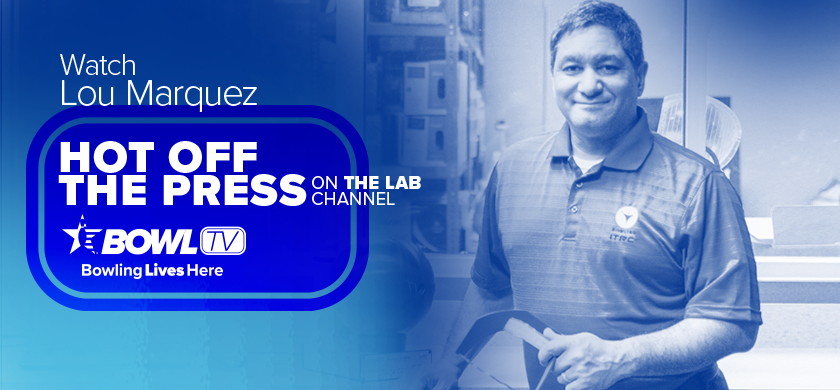By Lou Marquez on May 13, 2019 8:56:59 AM
Last time in Hot Off the Press, we went over how you can change the surface of your bowling ball to customize your reaction to a given lane condition. Today, let's get into some of the science of what's actually happening to your ball when you alter the surface.
 To do that, we're going to look at two bowling balls. One is shiny and the other has been roughed up a little bit to add some surface. Using our Jayhawk Surface Scanner, we're going to be able to see the peaks and valleys of the surface, the distance between those points and also the overall grit of the ball's surface.
To do that, we're going to look at two bowling balls. One is shiny and the other has been roughed up a little bit to add some surface. Using our Jayhawk Surface Scanner, we're going to be able to see the peaks and valleys of the surface, the distance between those points and also the overall grit of the ball's surface.
The Ra tells us the average peak height on the ball's surface. Think of it as roughness altitude. It takes all the peaks and valleys-to get extra technical, it actually converts the valleys into peaks so we can see how far up and down the surface goes-and calculates the average peak height. A larger Ra value means the surface is spikier.
The RS tells us the distance between those peaks, which we can think of as roughness separation. Large RS values mean the peaks are widely spread out and small RS values mean the peaks are closer together.
Most of the time, if you want your ball to have an aggressive motion, you'll want a both the Ra and RS to be high.
We'd expect the shiny ball to have a higher grit with lower Ra and RS values, so let's fire up the surface scanner and see what we can learn.
Our shiny ball gives us a grit of 5,208 with a couple of large spikes, which could very well be due to the logo on the bowling ball. For the most part, the peaks and valleys are of similar heights and are pretty close together.
When we scan the matte ball, we see a big difference in the graph, as the rougher surface shows us more dramatic peaks and valleys as well as a greater distance between them, just as we'd suspect. This ball reads a grit of 3,595, which is quite a bit less than our shiny ball. This makes sense as the more texture or surface we put on a ball, the lower the grit will become.
Knowing what type of surface you like and even your Ra and RS preferences can help you and your pro-shop operator figure out the best plan for your arsenal on any given set of lane conditions.
Perhaps more important: knowing your preferences will allow you to get your ball back to those numbers whenever you need to do so, since you may be altering the surface of your equipment as you move from tournament to tournament or even league to league.
Lou




comments